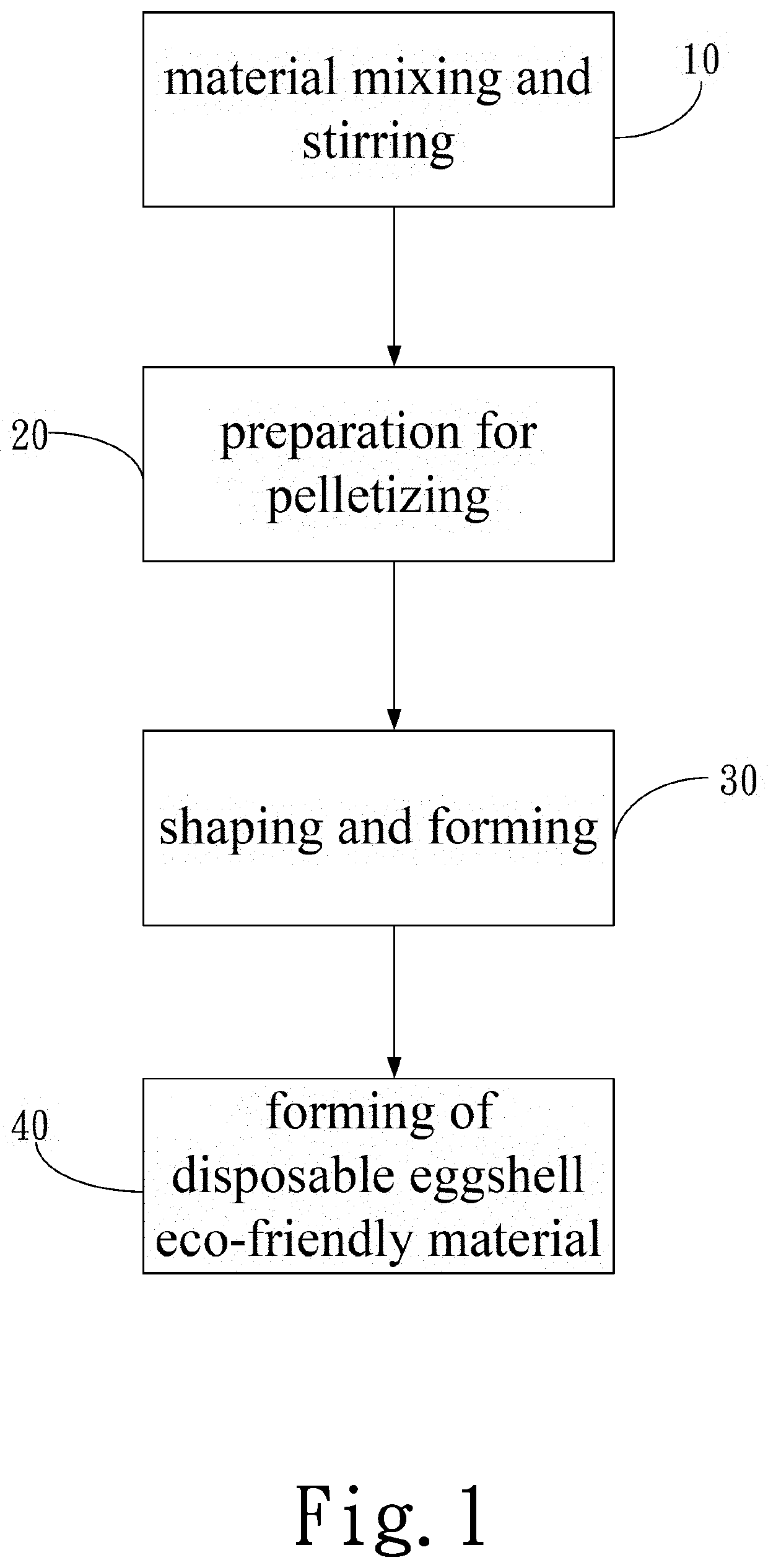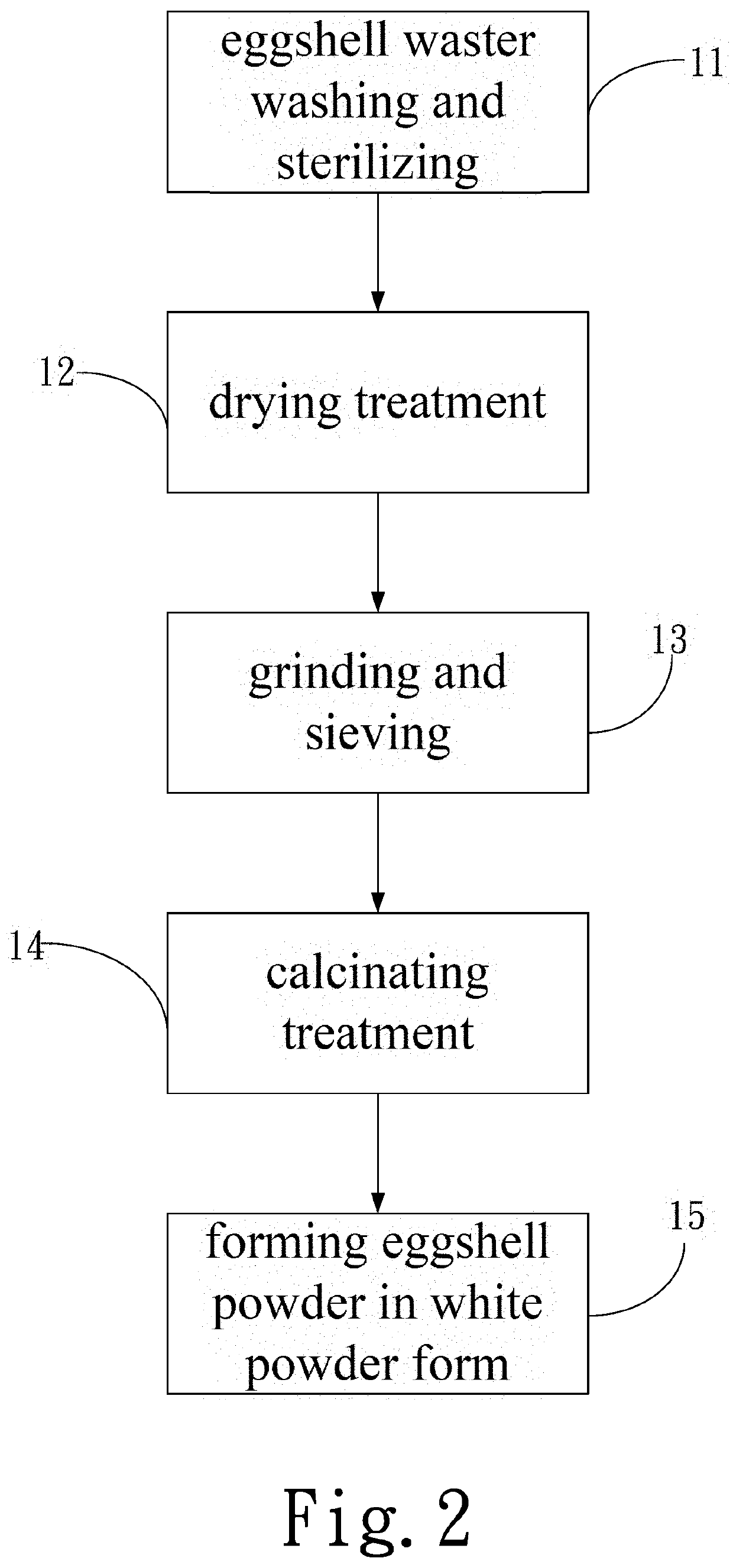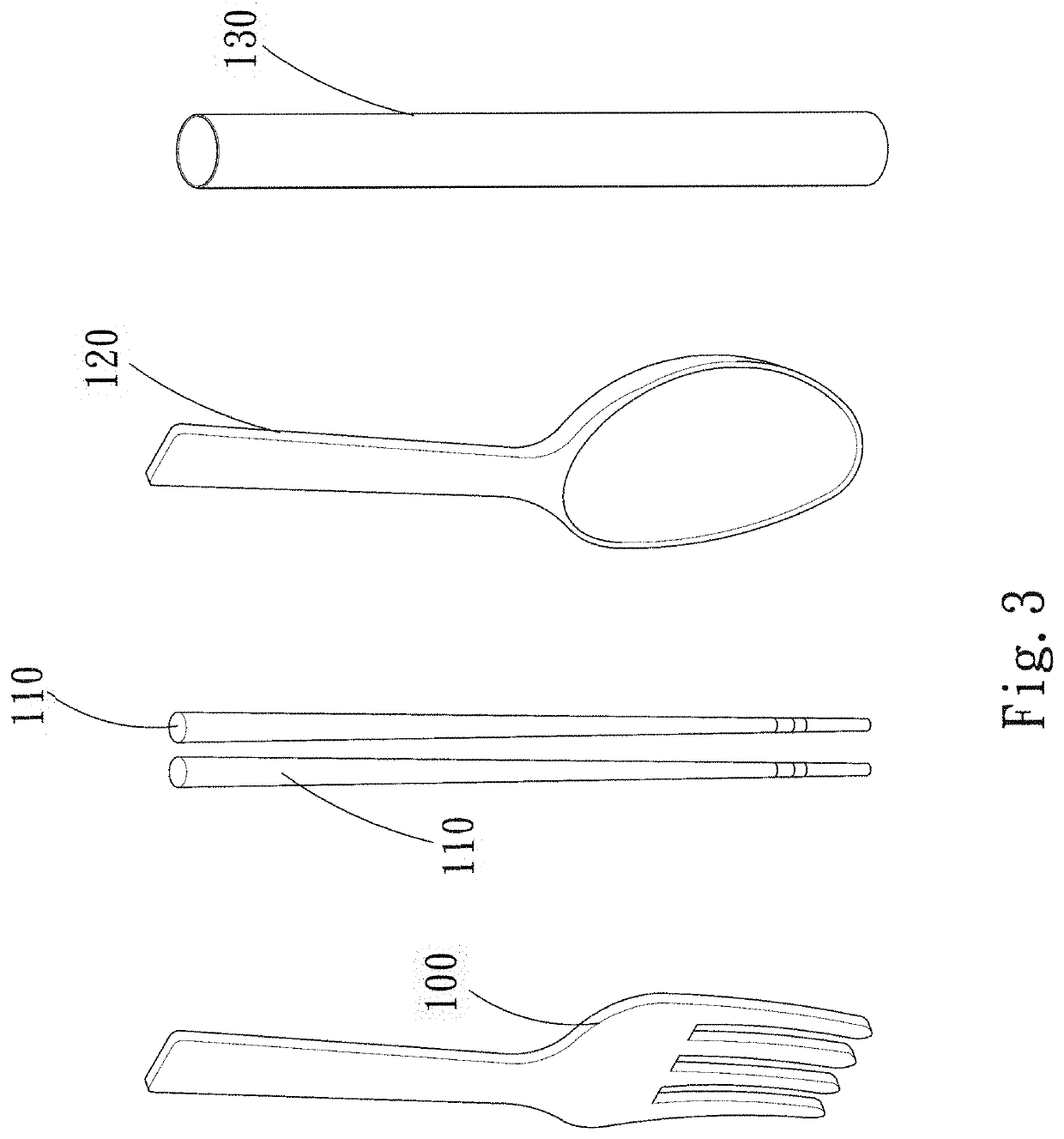In addition to being not in compliance with global environmental trends of plastic reduction, the large amount of one-time-use disposable plastic products, if not properly recycled, would be disposed of to create a large amount of waste.
Even being made degradable, the plastics material is still consumed with such a large quantity, so that in addition to the high material cost, no effective degradation could be realized for an effect of protection of soil, and further, the known disposable plastic products, when disposed in a large amount as accumulation of waste, could occupy a large area of the land, and the large amount of
plastic waste may cause damage to the pH value of the soil,
hygiene of the environment, and the soil itself, eventually leading to catastrophe that is of no way to recover.
In addition, the
toxicant gases generated by the incinerators may lead to shortening of the service life of the incinerator due to
corrosion of boils and
piping, this being a major reason for significant reduction of lifespan of an incinerator, making it uneconomic.
However, after the edible eggs are generally broken and opened for consuming
yolk and
protein contained inside, or after other eggs that are not traditionally considered edible, such as ostrich eggs and
crocodile eggs, have been hatched, would create a waste of the eggshell, and such remaining of eggshell is disposed abundantly, leading to issues of
environmental hygiene for a large number of flies and insects would gather around and
breed for consuming the residue of
protein and egg membrane, and further, this creates an environmental issues of transportation and accumulation of a large amount of garbage.
To ensure sanitary and disinfection of the eggshell
powder, a complicated process of disinfection and sterilization must be carried out on the eggshell first and this makes the process of manufacturing the composition very complicated and also adds an extra amount of cost, making it uneconomic.
Further, if there is any error or incorrectness occurring in the precedent process of disinfection and sterilization of the eggshell, it may make products made of the composition of mixture of eggshell powder and
polymer carrying or contaminated by
bacteria, because during the manufacturing process of the eggshell powder or the combination of the eggshell powder and
polymer, due to possible existence of viruses and
bacteria, such as colon bacillus or
bird flu virus, on the eggshell itself, contaminating machinery for injecting operations may occurs.
This makes it not suitable for making the above-mentioned one-time-use disposable
personal hygiene and cleaning devices, such as
toothbrush and comb, or one-time-use disposable
dental mirror, hook,
forceps for dental treatment, or medical oral masks and N95 masks for personal epidemic prevention, or the even large quantity of dinning utensils of disposed chopsticks, knives, forks, and drinking straws, which require severe sterilization.
This would impose a significant constraint to the application of such products and lowers the economic value thereof.
Similar to the previous US patent, the eggshell is directed added into the eggshell assisting substances at a regular temperature or a low temperature, and in addition to the above-mentioned issue of increasing cost of disinfection and sterilization and being hard for complete sterilization, such a formed product also suffers the issue that if there is any error or incorrectness occurring in the precedent process of disinfection and sterilization of the eggshell, it may make products made of the composition of mixture of eggshell powder and
polymer carrying or contaminated by
bacteria, because during the manufacturing process of the eggshell powder or the combination of the eggshell powder and polymer, due to possible existence of viruses and bacteria, such as colon bacillus or
bird flu virus, on the eggshell itself, contaminating machinery for injecting operations may occurs.
This makes it not suitable for making the above-mentioned one-time-use disposable
personal hygiene and cleaning devices, such as
toothbrush and comb, or one-time-use disposable
dental mirror, hook,
forceps for dental treatment, or medical oral masks and N95 masks for personal epidemic prevention, or the even large quantity of dinning utensils of disposed chopsticks, knives, forks, and drinking straws, which require severe sterilization.
This would impose a significant constraint to the application of such products and lowers the economic value thereof.
However, the prior
Chinese patent does not disclose applications and techniques concerning.
Further, combination of the minute powdery form eggshell power having a small
diameter with the
thermoplastic materials that are available in the market is hard or impossible for a skilled artisan to achieve by consulting the prior art document.
The prior
Chinese patent document does not provide solution of the above problems concerning
environmental protection and
hygiene that actual applications of the above-discussed one-time-use disposable personal
hygiene and cleaning devices, such as toothbrush and comb, or one-time-use disposable dental mirror, hook, forceps for dental treatment, or medical oral masks and N95 masks for personal epidemic prevention, or the even large quantity of dinning utensils of disposed chopsticks, knives, forks, and drinking straws may cause.
The source of the maritime inorganic power made of
shellfish shells is the shellfishes, which may not be easily available, and generally depends on the growth rate and growth season, and may just have a limited supply.
Further, the process of washing treatment is hard, requiring throughout washing and disinfecting.
Further, the maritime creatures have very hard shells, requiring an extended period of time for
grinding, consuming a large amount of energy, leading to an excessively high
processing cost, and eventually making such a maritime creature inorganic power extremely high in manufacturing cost, making it uneconomic.
Further, this utility model requires a great consumption of a large number of maritime creatures of shellfishes, and this may potentially destruct the
ecology and environment of the ocean, making it not suit for industrial development.
 Login to View More
Login to View More 


